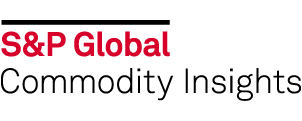
Download Report IHS CEH Report : Animal Feeds: Phosphate Supplements (Chemical Economics Handbook 2019)
PDF by S&P Global Commodity Insights; IHS Markit
Information
Format: PDF Language: English Pages: 153 Publisher: S&P Global Commodity Insights; IHS Markit Publication Date of the Electronic Edition: 2019
?
ISBN: 126204
$49
Delivery time: Maximum 24 hours
Description
Inorganic phosphate supplements play an important role in the animal feed industry. Calcium phosphates, the most widely used phosphate supplements, supply essential minerals for the development of strong teeth and bones in livestock, poultry, and pets. Feed-grade calcium phosphates include dicalcium phosphate (DCP), monocalcium phosphate (MCP), and tricalcium phosphate (TCP). World consumption of feed-grade calcium phosphates is estimated at 7.8 million metric tons in 2018, valued at about $6 billion, and growing at 2.4% over the next five years.
Overall, the feed phosphate industry currently has excessive capacity after a phase of rapid expansion due to low technical barriers. Lower prices and profitability since 2015 have resulted in consolidation in the industry. On the other hand, the lower feed cost has helped support feed phosphate demand growth, especially in developing countries where there are lower applications rates. Feed phosphates are used mainly in poultry and swine sectors, and to a much lower extent in cattle feed. There has been increased use of feed phosphate supplements in the pet food sector, albeit from a very small base.
Among the three major feed phosphate products—MCP, DCP and TCP—DCP is the dominant product used today, accounting for 64% of total market in 2018. However, MCP will drive demand growth and outperform the other product categories, thanks to better digestibility and lower cost to produce. MDCP, a blend of MCP and DCP, is also gaining popularity in the market.
Developing countries and regions, such as Central and South America, China, and Other Asia/Oceania will lead demand growth over the next five years.
Brazil will see the highest demand growth among all regions, as the recovery in hog and poultry production will bring increased feed phosphate use. Due to high utilization rates in existing production facilities, future demand growth will likely be met by imports. Although DCP is the major product used and produced in the country, MCP imports and uses have been increasing in the past few years, and this trend is expected to continue. Morocco has been a major MCP supplier to the Brazilian market, with Mosaic in the United States being a potential competitor.
China supplies more than 40% of the world's feed phosphate production. Capacity peaked in 2014, followed by a phase of small-scale facility shutdowns, owing to tightening environmental regulations. The large-scale feed phosphate plants are vertically integrated to upstream the phosphorus resources. Growth is seen moderating in the MCP and DCP sectors, but high growth rate is expected for TCP, driving global TCP consumption and production in the forecast period.
The United States is moving away from TCP toward MCP and DCP, after Nutrien (formerly Potash Corp. [PCS]) shut down the last remaining US TCP facility in 2017, as TCP had become more expensive to produce relative to MCP and DCP. Price corrections among all phosphorus products since 2015 have put earning pressure on the major producers. A slower production outlook for the US poultry and swine sectors is expected to result in slower growth for US feed phosphate use.
In Europe, there has been growing demand for higher-quality products, such as cadmium-free additives. The new Aliphos plant in France began manufacturing such DCP products in early 2018. Due to overcapacity, however, the feed phosphate market has become very competitive, with some DCP plants likely to be displaced in the near future.
$49
Delivery time: Maximum 24 hours
